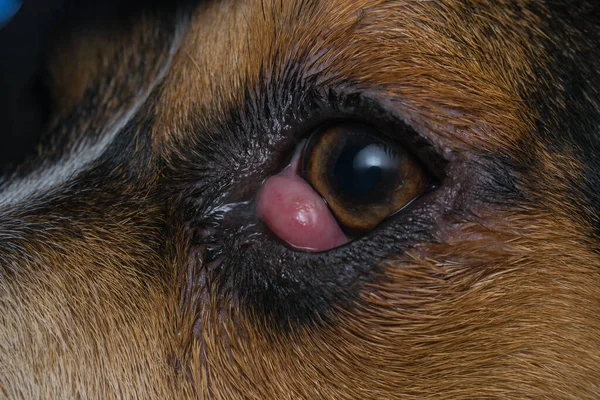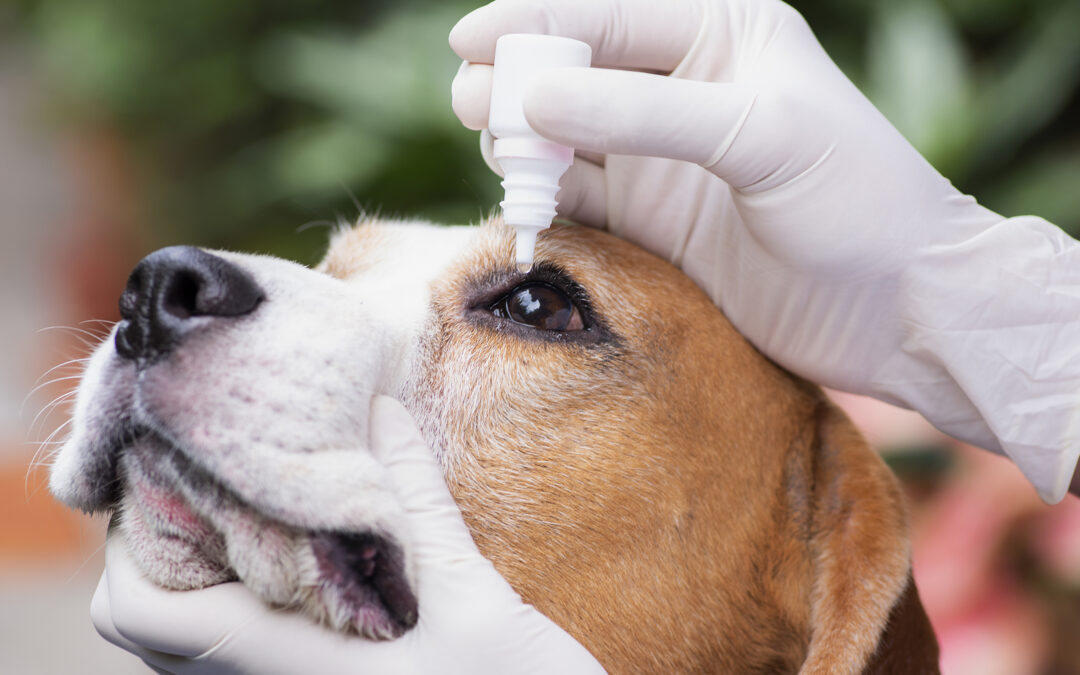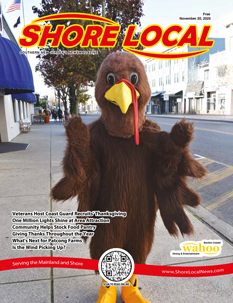While it may look very scary to see a red lump protruding from your dog’s eye, try not to panic — it is probably not a veterinary emergency. Nictitating occurs when a dog’s third eyelid prolapses and bulges from the eye. Since it resembles a cherry popping out, it is commonly known as “cherry eye.”
Dogs have an upper, lower, and third eyelid that moves diagonally. This third eyelid sits in the corner of the eye and provides roughly 30% of a dog’s natural lubrication. In some dogs, the connective tissue that holds the third eyelid in place weakens, causing it to droop or prolapse. When this happens, the condition is referred to as cherry eye.
Cherry eye can occur in any dog, but some breeds appear more predisposed. According to the American Kennel Club, breeds prone to cherry eye include beagle, boxer, French and English bulldog, American and English cocker spaniel, Boston terrier, coton de Tulear, great dane, lhasa and rottweiler. While there are no definitive studies, many veterinarians believe cherry eye may stem from hereditary factors or the shape of a dog’s head. Most cases occur in young dogs under one year of age.
Although it looks alarming, most veterinarians do not consider cherry eye an emergency. However, it should be treated promptly. When the third eyelid prolapses, blood flow becomes restricted, and the gland can no longer produce the lubrication needed to keep the eye moist. As a result, most dogs with cherry eye rub or paw at the area, which can cause damage to the third eyelid or even lead to corneal injury.

Treatment typically involves a veterinarian gently massaging the third eyelid back into place and, in some cases, prescribing anti-inflammatory drops to reduce swelling. An ophthalmologist is usually not required unless the condition happens more than once. Repeated prolapses can weaken the surrounding cartilage, and many dogs continue to rub at the “cherry.”
Hopefully, you will never have to deal with cherry eye, but if you do, the first rule is: don’t panic. Call your vet and try to have your dog seen as soon as possible. If you are considering a breed prone to cherry eye, it’s wise to work with a breeder affiliated with an AKC breed club, such as the Boston Terrier Club of America, where breeders strive for sound structure and reduced risk of issues like cherry eye.
Any questions? Feel free to email heidi@fouronthefloordogtraining.net.
Heidi Clayton started Four On the Floor Dog Training to provide positive, reward-based dog training in South Jersey. She breeds, trains and shows bull terriers under the SoraBully’s Bull Terriers kennel name. Email questions to heidi@fouronthefloordogtraining.net or learn more at https://fouronthefloordogtraining.net











